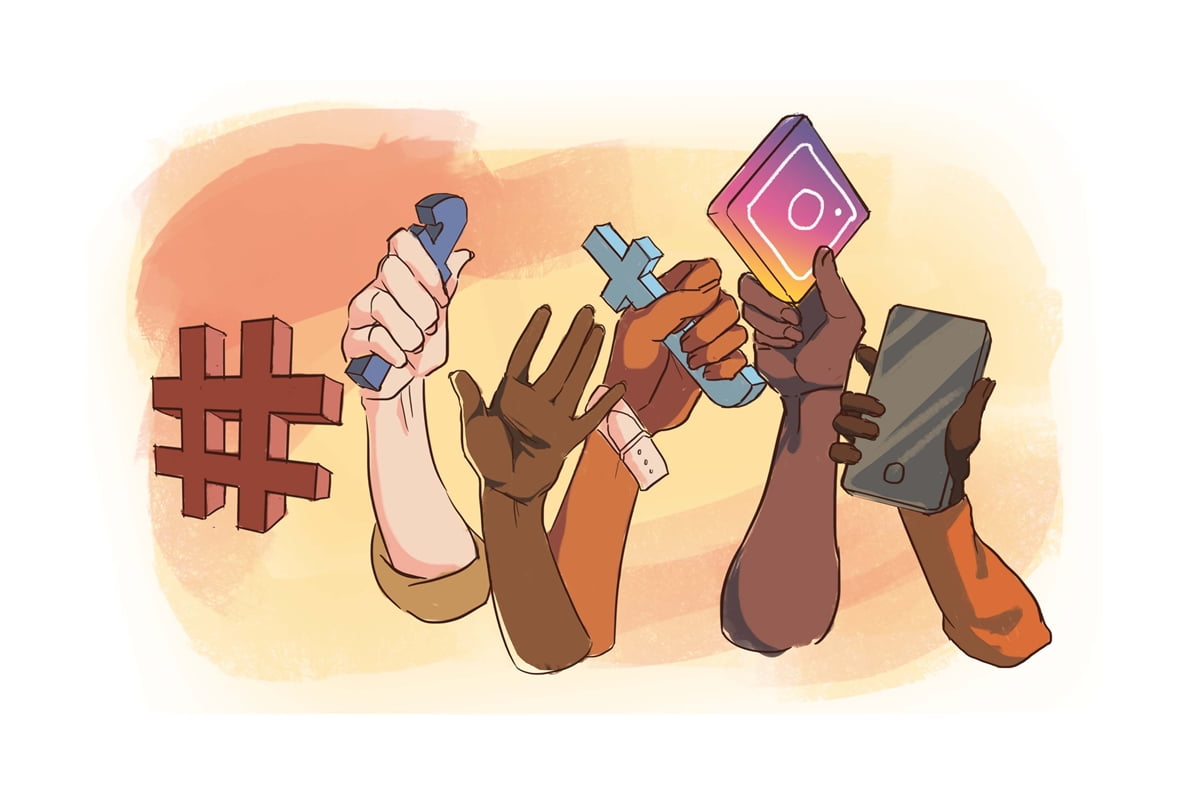Today, a hashtag has ceased to be just a trend of popularising challenges on the Internet. Hashtag activism is probably the only weapon that the government of the day seems to be having a real hard time grappling with. The expansive reach of social media platforms like Twitter, Facebook and Instagram has created an ever-breathing space for exchange of opinions and information, and active mobilisation for socio-political protest movements, thrusting life and voice into the fence-sitters who choose to not associate with these movements actively and physically. The pace and convenience with which information is relayed over social media, with its enormous consumer base harking to make their presence worthy and noticeable, protestors and activists are legitimately able to achieve what disruptive protest eventually aims at – calling attention to their cause and making themselves heard. The digital space has ensured that the dissenting voice will never die out, irrespective of the power structure that is stifling it.
Also read: Social Media Influencers: Serving Classism, Selective Feminism & Monolithic Nationalism
And yet, despite the evident value that social media and hashtag activism add to the momentum and outreach of any movement, we must not get carried away by how movements are shaped over these platforms. The underlying fact here is that regardless of its reach and convenience, social media is limited in its access for people.
And yet, despite the evident value that social media and hashtag activism add to the momentum and outreach of any movement, we must not get carried away by how movements are shaped over these platforms. The underlying fact here is that regardless of its reach and convenience, social media is limited in its access for people. A lot of people within the protest movements, on whom the central focus is on, often belong to a typical socio-economic background where they are almost entirely detached from the events and developments in the digital world, and even access to internet is difficult for them. Their voices and opinions constitute the core of the reason of agitation, as they are the key stakeholders who are concerned and affected in a direct manner. The restricted access of social media confirms that these voices might never find a space in the conversations that thrive here, and hence these conversations remain famished of the first-hand accounts of what protestors actually demand. This further opens up avenues for maligning the cause of the movement and misplacing the context of the demands of protestors.

There is undeniable evidence on how social media has been the linchpin of numerous large scale movements with hashtag activism like the Me Too, Black Lives Matter, Dalit Lives Matter back home or anti-CAA/NRC mobilisation, and yet we must not forget who mostly has the privilege to take up the digital space within these movements. For instance, a very large number of women who work in the informal sector as agricultural labourers, factory workers or others face sexual harassment on a daily basis, but remain aloof from the Me Too hashtag due to their inability to access a digital platform. And hence it’s worth acknowledging that the origins, causes and realities of a movement cannot be and should not be linked entirely to its developments on digital platforms. Those of us who look at the movement from a safe distance should be careful while forming opinions on it; those who wish to tweet about farmers’ protests should thus look beyond what the Twitter frenzy has to offer.
Also read: How Social Media Has Become A Site For Sisterhood In the COVID-19 Pandemic
The problem is aggravated by the selective access and visibility social media platforms provide to people with certain amount of economic, social and political privilege, wherein having a ground-level understanding of the source and cause of a movement is generally beyond their capacity. There is little incentive for such individuals to go ahead and investigate why some people are squatting in grueling conditions or marching on streets in the face of flagrant suppression by the State. And thus, their effusions on Twitter and Facebook could be based on imperfect and incomplete information. This explains why a majority of upper-caste, middle-class/rich Indian elite chose to dismiss farmers’ demands as illegitimate and uninformed, based on preconceived notions of farmers’ rural, illiterate background rendering them incapable of understanding the fuller scope of the laws. This essentially takes away from the cause of any agitation, as people start consuming it in a more acceptable and easily available version of posts, stories and tweets.
When public figures from Bollywood to cricket came out in support of JNU protests in 2019, Black Lives Matter movement in 2020 or the very recent farmers’ protests, the entire internet populace became interested in firing up controversies against them. The agitators’ voice and perspective is lost in the myriad exultations and abuses people hurl at these popular public figures. As these prominent public figures with massive social following choose to talk about such agitations and protests, the impact is often counter-productive as the attention that they draw to the issue consequently spirals into discussions of their life history and choices, deflecting from the movement, its cause and its realities.
The larger aim of this article is to thus de-emphasise the role social media and hashtag activism play in conveying the notions and ideas of any social movement. Whatever is catered to us as a product of quick pace and convenience requires sufficient understanding of the crux of who is agitating, and why, before we start to consume it as verified truths.

The larger aim of this article is to thus de-emphasise the role social media and hashtag activism play in conveying the notions and ideas of any social movement. Whatever is catered to us as a product of quick pace and convenience requires sufficient understanding of the crux of who is agitating, and why, before we start to consume it as verified truths. What needs to be prioritised within the conversations regarding any movement is particularly important, or it will essentially take away from the authenticity of the cause. Now we know why farmers’ protests for most general public is about who should we have supported in the Rihanna-Kangana tiff.
Featured image source: DailyBruin
About the author(s)
Riya Gangwal, an Economics student at Delhi University, is a fanatical reader, and a passionate poet and debater. She loves to research about policies for social change and economic development. When she is not philosophising failure, she is daydreaming of causing revolutions in her lifetime. She can be found on LinkedIn.




